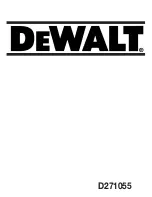
headline bars
continuation tabs
notes
warnings
headline bars
continuation tabs
notes
warnings
headline bars
continuation tabs
notes
warnings
model no. 054-6841-4 | contact us 1-800-689-9928
20
OPERA
TING INSTRUCTIONS
ADJUSTING THE FENCE
(fig 12-14)
The fence supports and guides the workpiece. To
provide the best support during routing operations,
the fence facings should be as close to the bit as
possible without contacting the bit (typically about
1/4” from the bit is a suitable distance).
TO ADJUST THE EXTENDED FENCE FORWARD AND
BACKWARD
(fig 12)
1. Loosen the two clamping knobs (14).
2. Move the fence forward or backward along the slots
to the desired position.
3. Tighten the clamping knobs. The fence can be moved
forward and backward 3 3/4” (9.5 cm).
TO ADJUST THE IN-FEED AND OUT-FEED FENCE
LATERALLY
(fig 13)
The in-feed and out-feed fence can each be adjusted
2” (5 cm) laterally to lengthen the fence.
1. Loosen the four wing nuts.
2. Move the fence facings to the right or left, to the
desired position.
3. Tighten the wing nuts.
TO ADJUST THE OUT-FEED FENCE FOR JOINING
(fig 14)
For joining operations, the out-feed fence can be
adjusted up to 1/2” (12.7 mm) forward of the in-feed
fence to support the workpiece after it passes across
the router bit.
1. Loosen the clamping knob (14) on the out-feed
fence.
2. Move the out-feed fence forward of the in-feed fence to a distance equal to the width of material to be
removed from the workpiece. Tighten the clamping knobs.
3. Move and clamp the entire extended fence so that the out-feed fence is aligned with the cutting edge of
the bit.
fig 12
fig 13
fig 14
Содержание 054-6841-4
Страница 32: ......













































